Structurist Relief No. 3-1 (Canoe Lake Series) 1964
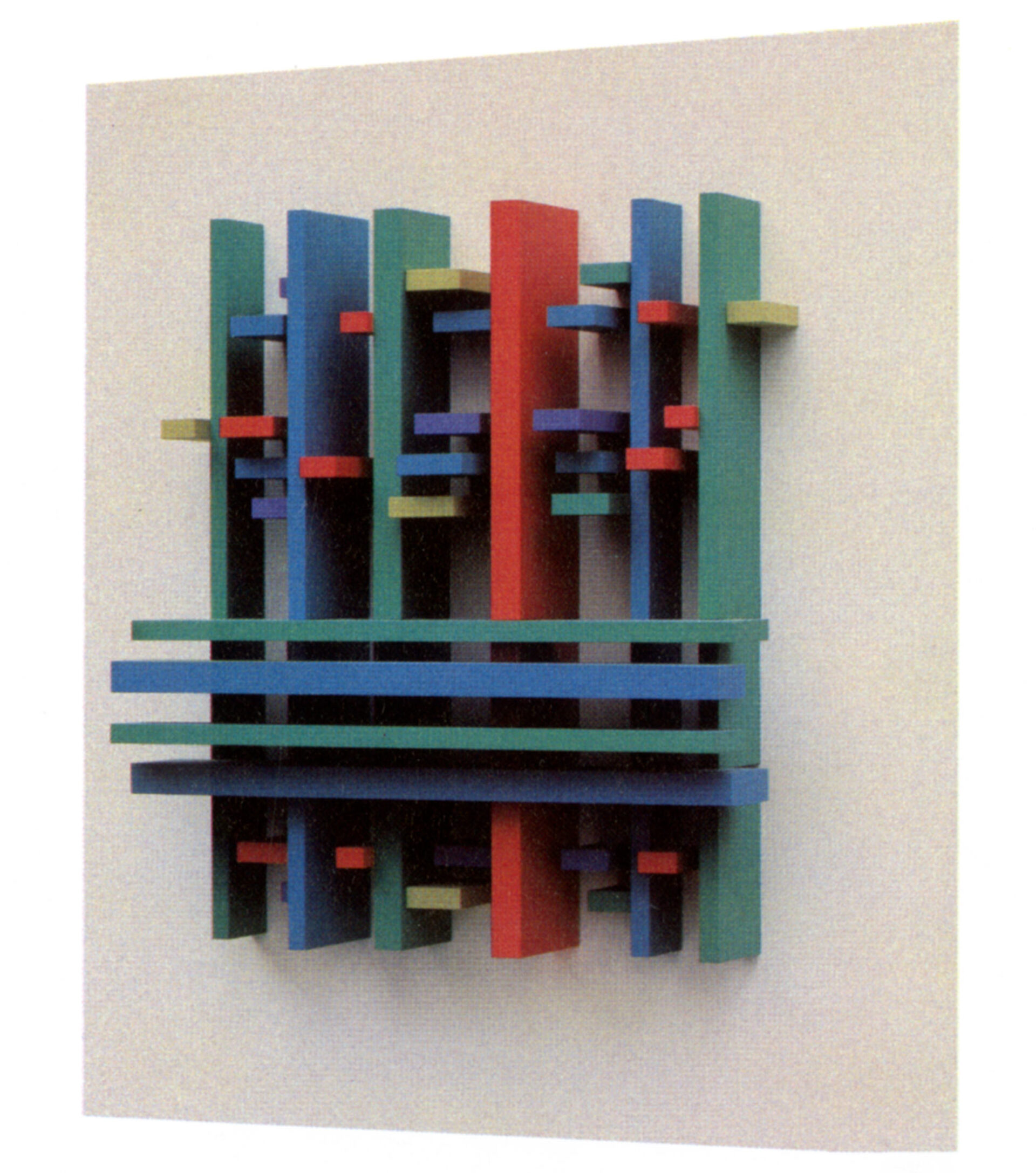
Eli Bornstein, Structurist Relief No. 3-1 (Canoe Lake Series), 1964
Oil on wood relief, 68.6 x 61 x 15.2 cm
Private collection
Structurist Relief No. 3-1 (Canoe Lake Series), as per its subtitle, dates to Bornstein’s 1964 summer stay in Group of Seven stomping grounds, in Algonquin Park, in a cottage on Canoe Lake owned by a friend of the composer Murray Adaskin (1906–2002). The relief embodies important developments in Bornstein’s use of both colour and form. He has, first of all, in response to what he was seeing, multiplied his colour choices considerably beyond simple primary hues, orchestrating an evocative play of mauve, green, yellow, and orange horizontal and vertical blocks and staves. At the same time, Bornstein has organized his relief components, not just side by side, but on top of one another, in a square-shouldered construction that brings mysterious shadows and obscure depths into being. The result is, not surprisingly, suggestive of the lakes and shorelines and deep woods of the wilderness setting in which he was working. It seems fitting that he should meet up with the Group of Seven artist A.Y. Jackson (1882–1974), who that summer made a short visit to Algonquin Park, the two of them photographed together in Adaskin’s own cabin also located on Canoe Lake.
By definition, the Structurist Relief is engaged with nature, and for Bornstein’s first reliefs, this meant that they inhabited not an illusionistic pictorial space, but the literal space that they shared with their viewers. They are in the world, so to speak. With this work, however, nature has more specifically become “Nature” (as Bornstein often capitalizes it), his subject matter now commensurate with those unpeopled natural landscapes that had earlier in the twentieth century captivated Tom Thomson (1877–1917) and the Group of Seven, such as Thomson’s In the Northland, 1915.
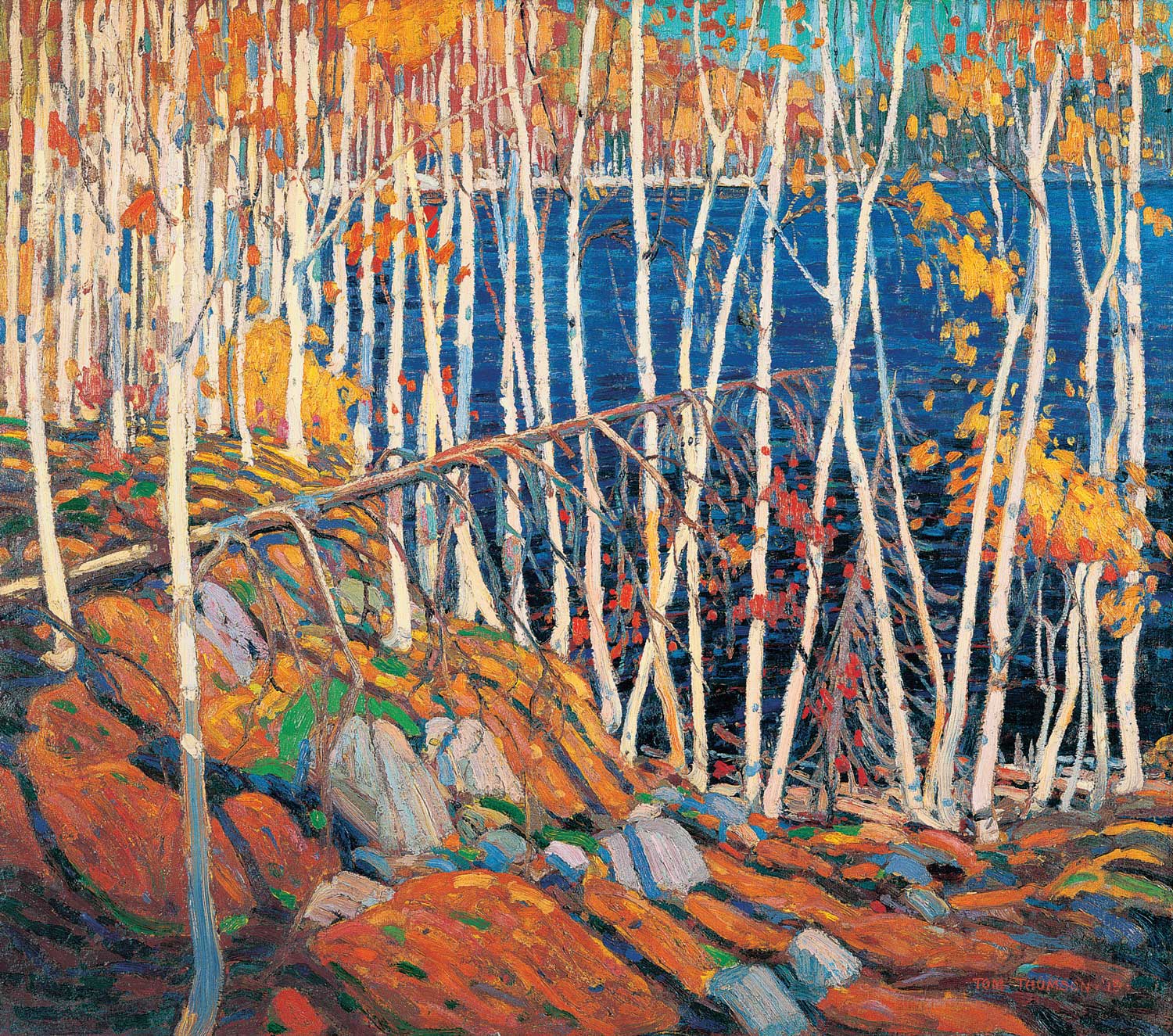
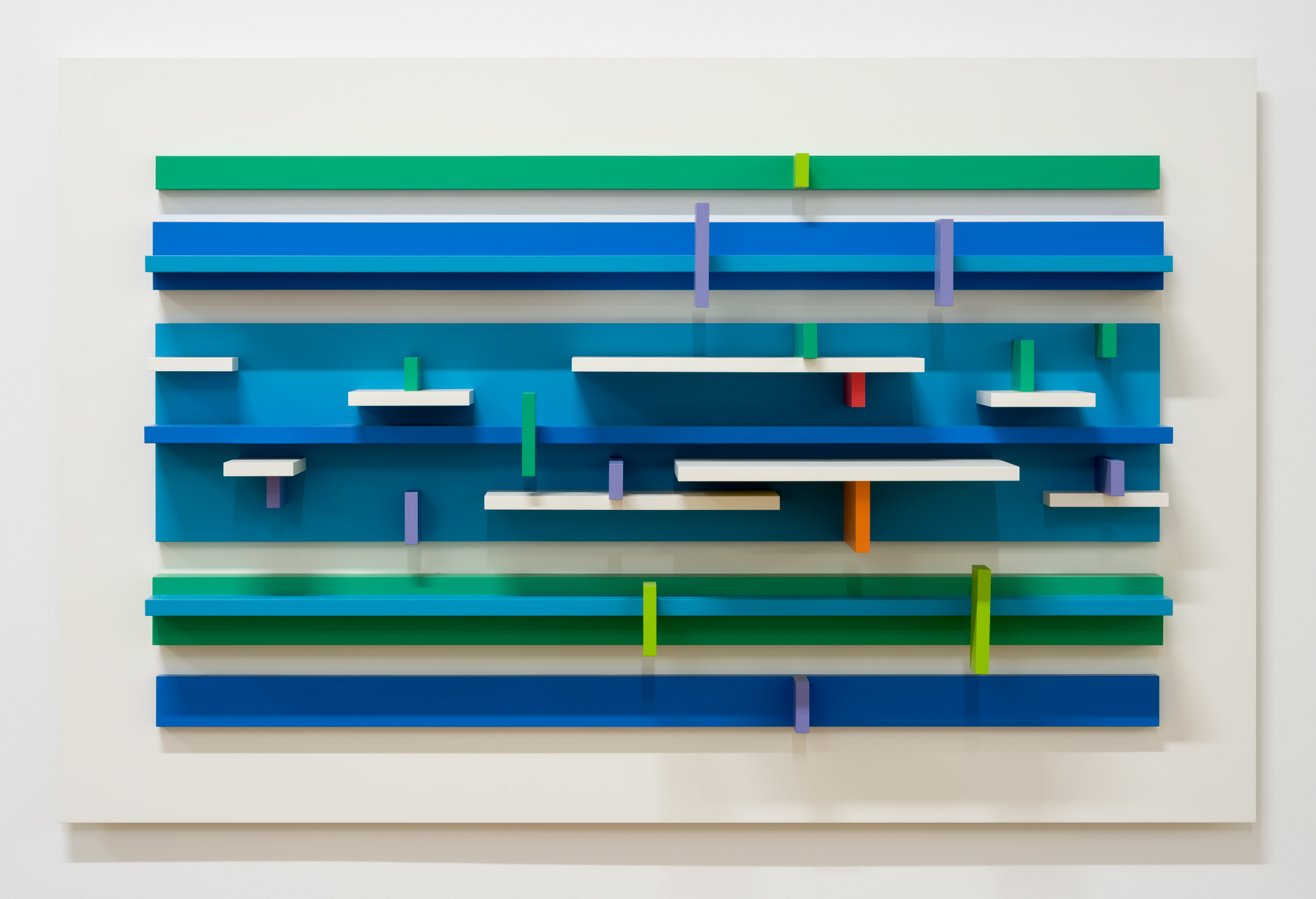
Indeed, what we witness in Structurist Relief No. 3-1 is pure non-referential abstraction giving way to the evocation of natural events. The Dutch painter Piet Mondrian (1872–1944) may have been the progenitor of Bornstein’s abstraction, but Structurist Relief No. 3-1 breaks ideologically with his De Stijl parent. Around 1918, Mondrian set out to distill a formal abstract language that, as simply as possible, could embody his aspiration for absolute ideal beauty, a realm of pure order divorced from the weather of everyday reality. But at that art historical moment, where Mondrian separated his art from nature’s capriciousness, Bornstein recognized a fork in the modernist road, one that pointed him in an alternative direction. Perhaps modern art could no longer “imitate” nature, but nor could it turn its back on the world or abandon nature’s diversity.
For Bornstein, therefore, if abstract art were to find a new creative direction, it should build its principles on the study of the operations of nature in all its plenitude. His challenge became to hone his capacities of observation by looking intensely at nature’s life and form, its colour, space, and light—whether in the woods, by the seaside (as in Structurist Relief No. 4-11 [Sea Series], 1965) or on prairie riverbanks—and to translate his findings into the ever-enriching formal language of his three-dimensional reliefs.

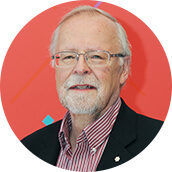 About the Author
About the Author
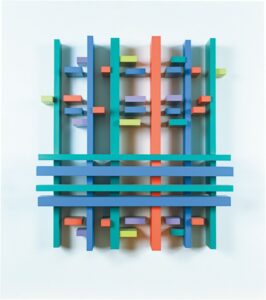 More Online Art Books
More Online Art Books
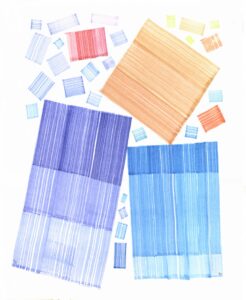 Acknowledgements
Acknowledgements